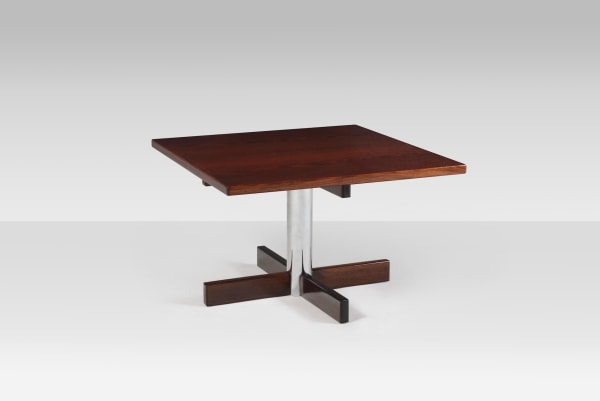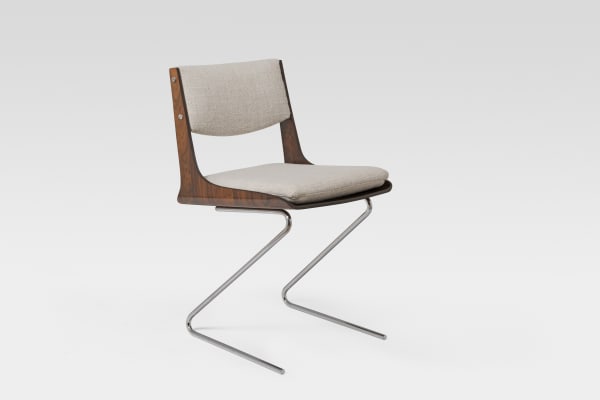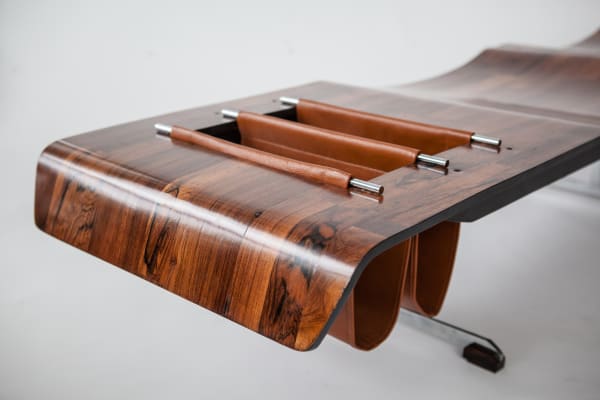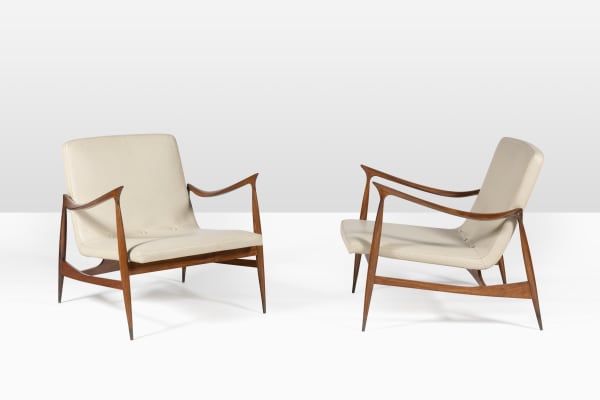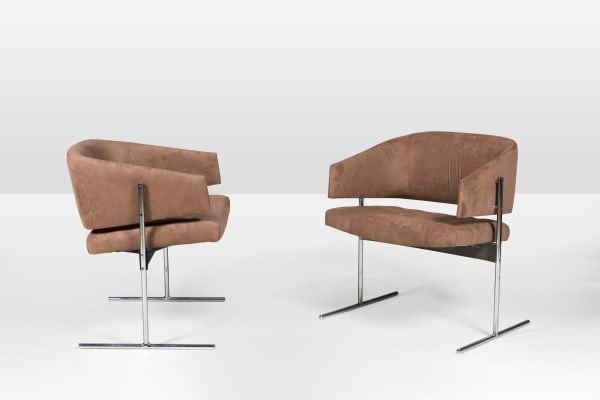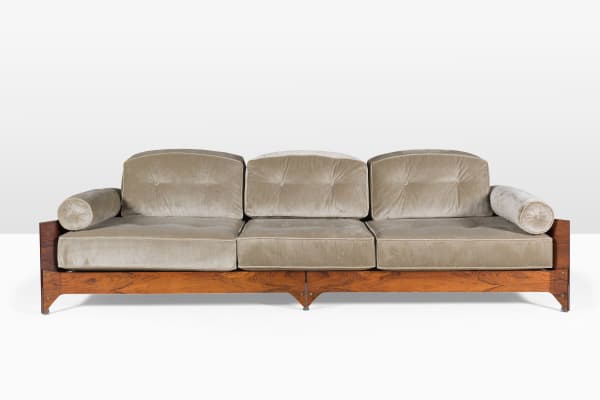Jorge Zalszupin Brazil, 1922-2020
-
 Pair of "Canguru" chairs
Pair of "Canguru" chairs -
 Cubo sofa
Cubo sofa -
 Pair of Cubo armchairs
Pair of Cubo armchairs -
 Pair of rare armchairs
Pair of rare armchairs -
 Early sideboard
Early sideboard -
 Sofa Brasiliana
Sofa Brasiliana -
 "Drink" stoolSold
"Drink" stoolSold -
 "Drink" stoolSold
"Drink" stoolSold -
 'Paulistana" lounge chair & ottomanSold
'Paulistana" lounge chair & ottomanSold -
 Ambassador deskSold
Ambassador deskSold -
 Ambassador desk
Ambassador desk -
 Chanceler coffee tableSold
Chanceler coffee tableSold -
 Chanceler coffee table
Chanceler coffee table -
 Composable bookcaseSold
Composable bookcaseSold -
 Exceptional set of eight chairsSold
Exceptional set of eight chairsSold -
 Exceptional set of eight chairsSold
Exceptional set of eight chairsSold -
 Guanabara table
Guanabara table -
 Large ambassador desk
Large ambassador desk -
 Magazine holder
Magazine holder -
 Mirror
Mirror -
 Onda benchSold
Onda benchSold -
 Pair of Dinamarquesa Armchairs
Pair of Dinamarquesa Armchairs -
 Pair of Presidential armchairsSold
Pair of Presidential armchairsSold -
 Pair of rare armchairsSold
Pair of rare armchairsSold -
 Pair of rare high-backed armchairsSold
Pair of rare high-backed armchairsSold -
 Paulistana lounge chairSold
Paulistana lounge chairSold -
 Romana coffee tableSold
Romana coffee tableSold -
 Senior armchair
Senior armchair -
 Senior armchair
Senior armchair -
 Set of 8 Senior dining chairs
Set of 8 Senior dining chairs -
 SideboardSold
SideboardSold -
 SideboardSold
SideboardSold -
 SideboardSold
SideboardSold -
 SideboardSold
SideboardSold -
 Tea TrolleySold
Tea TrolleySold -
 Very rare Brazilian sofaSold
Very rare Brazilian sofaSold
Jorge Zalszupin is one of Brazil’s most important designers. His furniture is characterized by both geometric lines and organic shapes in combination with well-defined proportions, graceful lines and classical detailing.
Jerzy Zalszupin was born in Warsaw, Poland, in 1922. In 1939 he escaped with his family to Bucharest where he studied architecture. At the end of the Second World War, his family moved to Northern France, where Jorge worked on the housing reconstruction. In 1949 he moved to Brazil, the only country that would grant an entry visa to his family. Zalszupin started to work with fellow countryman and architect Luciano Korngold in São Paulo.
In the late 1950s he acquired Brazilian citizenship and adopted the name ‘Jorge’. The 1950s saw the consolidation of the Brazilian modernist movement in art and architecture. Logically, in 1959, he established L’Atelier with the vision of creating a successful harmony between architecture and furniture. L’Atelier was a design collective that comprised architects, engineers and craftsmen as well as a full-scale team of professionals that did everything from researching materials to finalizing the product.
His designs were highly successful throughout Brazil, and L’Atelier showrooms became a benchmark of modernity. Zalszupin’s furniture reflects the combination of modern building standards (inspired primarily by the Scandinavian modernist school) with graceful lines, an exceptional sense of detail and the knowledgeable use of local woods.
His furniture earned him many commissions, including in Brasilia, where Oscar Niemeyer invited Jorge Zalszupin to be part of the team of talented furniture designers who collaborated on the conception and production of furniture for the new federal capital. The pieces he designed during this time incorporated the luxury of leather and combined it with classical Brazilian rosewood.












